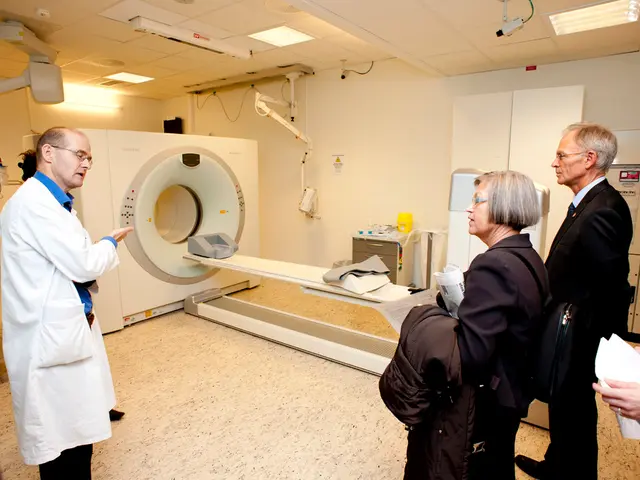Rest patterns: Insights into the why and how of human sleep cycle behavior
Understanding the Science of Sleep
Sleep, an essential daily ritual for humans, is divided into two primary categories: Rapid Eye Movement (REM) and non-REM sleep. The latter can be further subdivided into three stages: N1, N2, and N3.
Exploring Non-REM Sleep Stages
- Light Sleep (N1): As the brain transitions from wakefulness to sleep, it enters the lightest stage known as N1. Characterized by low-amplitude mixed-frequency brain activity, this stage serves as a transition to deeper sleep. It is easier to awaken during this phase, as muscle tone remains and breathing becomes steady.
- Deepening Sleep (N2): Slightly deeper than N1, N2 involves a drop in heart rate and body temperature. This stage prepares the body for deeper sleep by contributing to a decrease in the metabolic rate and body temperature. In N2, muscles relax further, eye movement ceases, and one becomes less responsive to external stimuli.
- Deepest Sleep (N3), also called slow-wave sleep, is the deepest stage of non-REM sleep, characterized by slow delta waves in the brain. This stage is critical for physical restoration, tissue repair, and growth. It also plays a role in the elimination of waste from the brain.
The Role of REM Sleep
Characterized by rapid eye movement, increased brain activity similar to being awake, and vivid dreams, REM sleep supports cognitive functions, emotional well-being, and memory consolidation. During REM sleep, muscle tone is low, brain activity is high, and dreams are more likely to occur.
Common Sleep Disorders
Disorders associated with REM and non-REM sleep stages can disrupt sleep quality and overall health. For example, REM sleep disorders include REM sleep behavior disorder, characterized by acting out dreams, and narcolepsy, a condition that affects the regulation of sleep-wake cycles. Non-REM sleep disorders, such as insomnia, can impact the ability to enter or stay in non-REM sleep stages, while sleepwalking and sleep talking occur during deep non-REM sleep (N3).
Understanding these sleep stages, their benefits, and potential disorders is crucial for maintaining optimal sleep quality and overall health. Additionally, getting enough sleep is essential for performing essential repairs and maintenance tasks in the brain, building connections between cells that enhance brain performance when awake, and allowing the body to repair and replenish cellular material.
Delving deeper into non-REM sleep stages, understanding the importance of Deepest Sleep (N3) for health-and-wellness is crucial, as it plays a vital role in physical restoration, tissue repair, and growth, much like a science experiment requiring the right conditions for successful outcomes. Furthermore, the cognitive functions and emotional well-being that REM sleep supports can be akin to a battery being recharged, ensuring optimal performance during the wakeful state.




